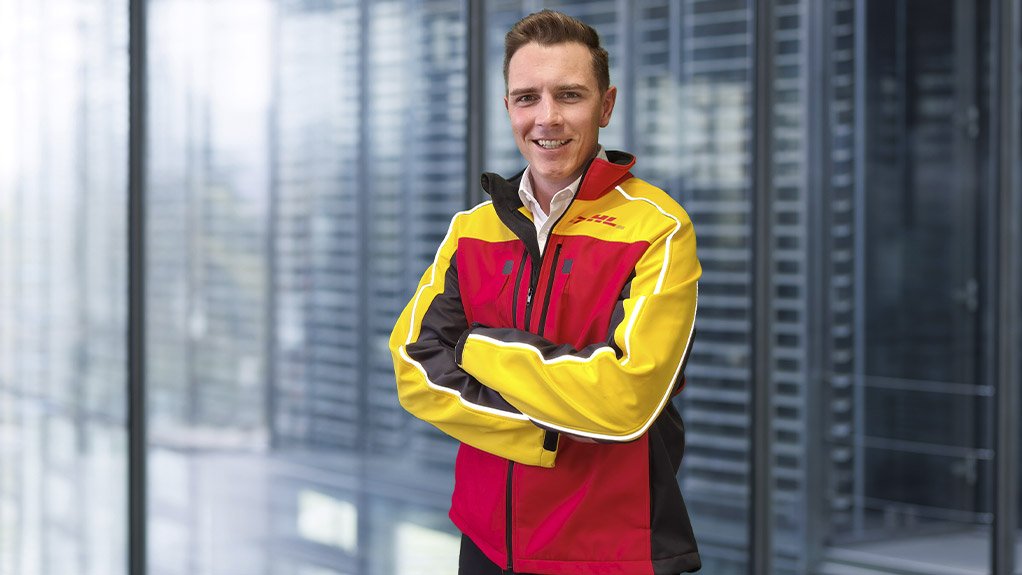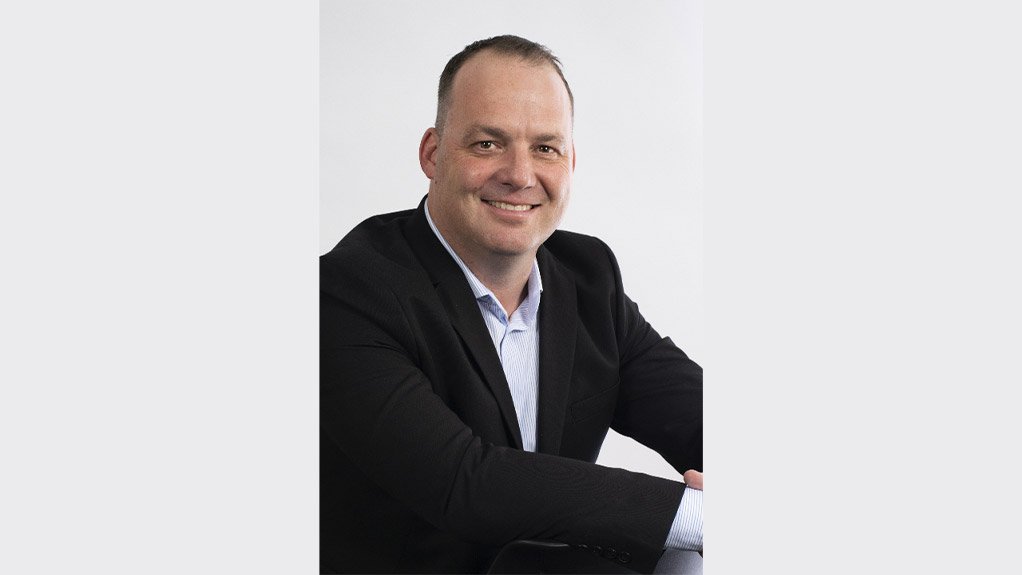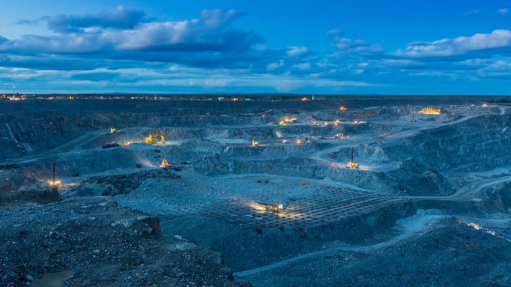Firm seeks to shore up mining supply chains



BREMER PAUW The lack of collaboration between the mining sector’s supply chains resulted in costly, independently-run supply, which, in turn, have resulted in inadequate planning and inventory control
IAIN RECH Centralised warehouses and shared space in the mining sector will be transformative
Global supply chains were among the many critical systems that needed to be re-examined following the emergence of Covid-19. These supply chains have yet to recover fully and, with disruption becoming the new norm, resilience in mining supply chains is crucial, says DHL Supply Chain Africa MD Bremer Pauw.
Supply chain resilience has become so critical to the African mining sector that the topic will be explored in various discussions and panels at the 2023 Investing in African Mining Indaba from February 6 to 9.
Pauw explains that, even before Covid-19 – and its resulting impacts – exacerbated the weak links in the mining supply chain, DHL Supply Chain Africa recognised an opportunity to address supply-related challenges in the mining sector.
The company entered the mining and engineering space in 2019.
“We were competing in saturated markets in the fast-moving consumer goods and automotive sectors. At the time, we decided to diversify our portfolio and started by visiting a few mining sites in the Rustenburg area, where we interviewed various mining professionals who all cited issues around unreliable delivery and equipment support,” says Pauw.
DHL Supply Chain noticed that mining supply chains were largely unconnected, that operations did not have much visibility within their supply chains, and the industry did not necessarily have access to the same level of data granularity compared to other industries.
“We saw the lack of collaboration between the mining sector’s supply chains first-hand. This lack resulted in costly, independently-run supply chains that use little or no technology, which has resulted in inadequate planning and inventory control.
“We realised that if we could repackage some products, we could change how mining supply chains operate. We are currently developing a database of industry supply chain information to model scenarios in which mining majors receive real value in cost savings, people development, technology transformation and sustainability.”
DHL Supply Chain intends to launch a route-to-mine transport network to achieve three objectives. The first is to eliminate waste and reduce carbon emissions. The second is to create visibility on the route-to-mine network and build supply chain resilience, and the third is to help create more flexibility on companies' balance sheets.
DHL Supply Chain Africa mining business lead Iain Rech notes that once the network is operational, the next step is to set up centralised distribution centres.
“Coalescing the independently run chains into one supply chain will have real-world benefits for the companies involved, including, for example, reduced landed costs by leveraging economies of scale as well as better and more reliable service delivery.”
He adds that real-time visibility will also help inventory control on sites and at regional distribution centres while reducing costs related to breakdowns or downtime.
“There have been scenarios where a part – often integral to the mine’s day-to-day functioning – is imported at exorbitant costs, even though it is available at an adjacent site.
“High-level discussions are taking place regarding our vision for this network and the centralised distribution centres. We plan to start small with our existing customers and work towards a model that would essentially become an ‘Uber’ for mining spares across Southern Africa.”
Rech stresses that centralised warehouses and shared space in the mining sector will be transformative.
“So many unused mine warehouses can be refurbished to become multiuser sites located closer to the mine sites. We are creating a warehouse network to position original-equipment manufacturers closer to their clients’ operations to help increase production and drive down costs. The warehouse sites will also serve as a consolidation point for repairs, service exchange products and high-demand goods.”
He comments that DHL Supply Chain currently only services dedicated warehouses but is in high-level discussions with mining houses to look into a consolidation facility in the east of Johannesburg, with two regional distribution centres in the Bushveld Complex and a third in the Northern Cape.
Enhancing Sustainability
A key benefit of the network is that it will help mining operators focus more time and attention on their journeys toward carbon neutrality, as it will free up capital to invest in sustainability solutions, says Pauw.
DHL Supply Chain, meanwhile, intends for its warehouse facility management operations to attain carbon neutrality by 2025. It also aims to halve its carbon impact, as measured in 2020, and is looking for a ‘greener’ fuel solution in South Africa, which cannot support electric vehicle options.
Rechadds that he is hopeful that African companies can leapfrog off of other regions’ learnings and trials to design and implement solutions that will benefit sustainability goals.
In the meantime, he notes that by investing in a new fleet – as DHL Supply Chain will within the next 18 months – it can enable carbon reductions by up to 40%, based on the Euro 5 emissions technology.
Comments
Press Office
Announcements
What's On
Subscribe to improve your user experience...
Option 1 (equivalent of R125 a month):
Receive a weekly copy of Creamer Media's Engineering News & Mining Weekly magazine
(print copy for those in South Africa and e-magazine for those outside of South Africa)
Receive daily email newsletters
Access to full search results
Access archive of magazine back copies
Access to Projects in Progress
Access to ONE Research Report of your choice in PDF format
Option 2 (equivalent of R375 a month):
All benefits from Option 1
PLUS
Access to Creamer Media's Research Channel Africa for ALL Research Reports, in PDF format, on various industrial and mining sectors
including Electricity; Water; Energy Transition; Hydrogen; Roads, Rail and Ports; Coal; Gold; Platinum; Battery Metals; etc.
Already a subscriber?
Forgotten your password?
Receive weekly copy of Creamer Media's Engineering News & Mining Weekly magazine (print copy for those in South Africa and e-magazine for those outside of South Africa)
➕
Recieve daily email newsletters
➕
Access to full search results
➕
Access archive of magazine back copies
➕
Access to Projects in Progress
➕
Access to ONE Research Report of your choice in PDF format
RESEARCH CHANNEL AFRICA
R4500 (equivalent of R375 a month)
SUBSCRIBEAll benefits from Option 1
➕
Access to Creamer Media's Research Channel Africa for ALL Research Reports on various industrial and mining sectors, in PDF format, including on:
Electricity
➕
Water
➕
Energy Transition
➕
Hydrogen
➕
Roads, Rail and Ports
➕
Coal
➕
Gold
➕
Platinum
➕
Battery Metals
➕
etc.
Receive all benefits from Option 1 or Option 2 delivered to numerous people at your company
➕
Multiple User names and Passwords for simultaneous log-ins
➕
Intranet integration access to all in your organisation




















